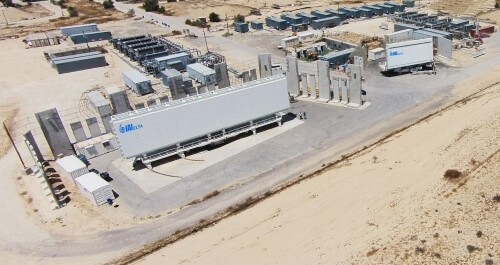The Aerospace Industry unveils TERRA - one of the largest radar systems in the world: a dual-frequency radar for searching, identifying and tracking at very long ranges * The super system combines a UHF frequency early warning radar, with a new S frequency radar, for continuous tracking and mapping bodies in space

The Aerospace Industry unveils 'TERRA' - a dual-frequency radar system for very long-range search, identification and tracking, which effectively locates low-signature targets, ballistic missiles and satellites. The super system combines the capabilities of the Ultra high frequency (UHF) early warning radar system, which was revealed earlier this year, with Spectra - a new and unique S frequency radar system, for continuous tracking with high precision at long ranges is very. The 'Terra' presents upgraded capabilities that allow, among other things, automatic switching between the two radar systems for the purpose of classifying the targets, editing the launch point and hitting them very precisely, even in difficult weather conditions.
Its extraordinary dimensions (site area of 150x150 square meters) make Terra one of the largest radar systems in the world, providing a strategic solution for countries that need activity at extremely long ranges.
The Spectra radar system, manufactured by the Elta division of the Aerospace Industry, is based on an active electronic scanning array (AESA) and the use of gallium nitride, a special material that contributes to energy savings and higher power. The system allows classification of the goals and continuous and accurate tracking of them. The system is portable and suitable for installation also on ships. The two components of the system, the 'Ultra' and 'Spectra' radars are also designed to operate independently and are built in a modular manner by using common building blocks, in which thousands of antennas have been installed.
Nissim Hadas, VP of the Aerospace Industry and CEO of Elta: "The 'Terra' super system gives its users new capabilities and improved performance at extremely long ranges. These capabilities are based on the alert dimension of the 'Ultra' system, which the 'Spectra' upgrades through the use of innovative technology for continuous tracking and identification.

5 תגובות
The wars resulted in the invention of almost all existing technologies.
Beautiful. It's just a bit of a shame that 65 years of war, and if we go back from 1884, resulted in a large investment in war-supporting sciences and less in pure research. I agree that there is probably no choice.
150×150 square meters? Something is wrong with the units
Legal: In modern ships, about 20 years ago they started building "cubes" in the upper part of the ship, which cover it with smooth panels in order to reduce the ship's radar signature. On some of the panels you can see flat panels of flat radar antennas. Today we are talking about ships where each side is two or three smooth and straight surfaces, which seem to hide the entire part of the ship above the water, to further reduce the radar signature. Each such wall area can be used as one large radar.
Example of modern ships:
Zumwalt-Class Destroyer
Example Link:
https://www.navy.com/about/equipment/vessels/cruisers.html
Will there be room for both radars on one ship?